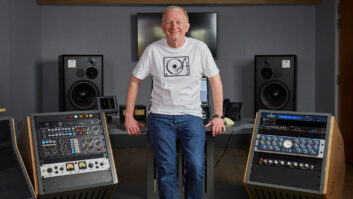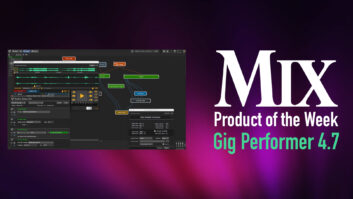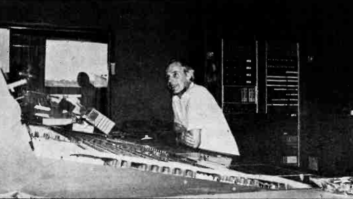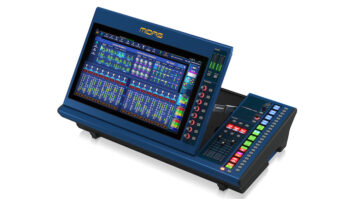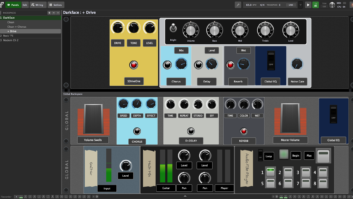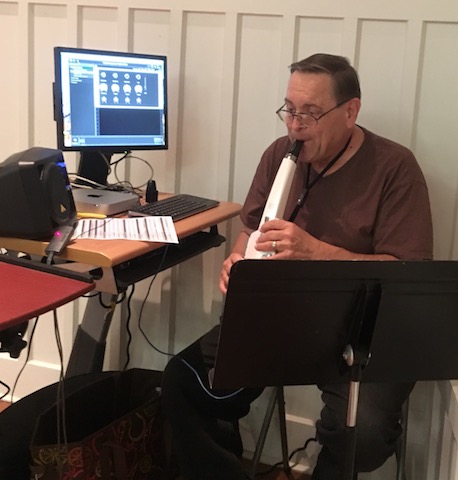
Benoit, WI – October 2018…Playing a range of saxophones and flutes, Daniel Mackey has spent years making music from the Big Band era. But he has also long maintained an interest in music technology. Starting with perhaps the earliest MIDI wind controller, the Yamaha WX7, Mackey has worked through successive generations of controllers, sound modules, and virtual instruments. Like many others, his performing rig has evolved through hardware-based VST hosts and other systems, constantly bumping up against limitations, from devices left obsolete to VIs straining processors.
Performing solo at a variety of small-scale events, Mackey needed a more manageable and reliable solution. An online conversation with longtime electronic musician and journalist Geary Yelton brought Deskew Technologies’ Gig Performer software to Mackey’s attention, and, in early 2017, he moved to the program to host his sound sources.
“I started playing with Gig Performer and figuring out what it could and couldn’t do, and it could do a lot more than it couldn’t do,” Mackey recalls. “It took every VST and Audio Unit instrument that I threw at it, and they all opened and worked fine.” Today, Mackey plays a Roland Aerophone AE-10 MIDI wind controller, while Gig Performer, running on a Mac Mini computer, effortlessly hosts a full load of hefty VIs, including a complete set of Audio Modeling’s SWAM wind instruments, SWAM strings, Native Instruments FM8, IK Multimedia Syntronik, and even ePipes’ Studio Piper modeled bagpipes.
Gig Performer’s ability to manage the demands of all those VIs was obviously crucial to Mackey. “With the hardware host I used before, I could do two instruments at the same time, but if I added a third, the processor would overload. Now, I can access the sounds I want and change them quickly on the fly, and Gig Performer stays very stable and processor-friendly,” he reports. “Some of the SWAM strings are pretty processor-intensive, but I’ll have a couple of those going and still not exceed 20 percent CPU load. I don’t have to have all of my plugins active at one time, either; I can hit a pedal and bypass plugins I’m not using to save CPU.”
Mackey was an early adopter, as Gig Performer was released only a few months before he started using it, and he has enjoyed the program’s maturation since then. “I’ve grown with Gig Performer because Deskew just keeps improving it and it gets better and better,” he says. Mackey points to the addition of the Audio File Player module in version 2 as a great boon, since he performs playing over up to 50 different recorded track beds, which he previously had to load onto an iPad.
Mackey has configured a Gig Performer rackspace (a complete system of plugins and connections) for each of the 10 banks of presets his Behringer FCB 1010 MIDI foot controller can call up. For each rackspace, Mackey created a virtual front panel with an LED indicator to show the currently selected song within the bank, a level control, and controls to start, pause, and stop playback, which are mapped to physical controls on the FCB1010. Mackey plans to move the track control functions to his IK Multimedia iRig Blueboard in the future.
To keep all of the footpedal controls straight, Mackey relies on Gig Performer’s Rig Manager and the ability to run multiple instances of the program simultaneously. “I can run an instance for the Audio File Player that receives program changes on MIDI channel 4, while my instrument instance is set to receive on channel 3. Then, one set of pedals will transmit program changes or controller messages over channel 4 while the other set of pedals sends to channel 3, and they don’t interfere with each other.”
Between track playback and all of his layered sounds, Mackey’s performances are technically sophisticated, but Gig Performer makes it all simple for him. “Gig Performer has totally streamlined everything to the point where I can go in and be set up and performing in under 12 minutes,” he enthuses. “Everything comes up where it needs to be, and when I call up a rackspace, all of its plugins open with their saved settings. Changes I make on the pedals go where they are supposed to go. I can assign a controller to growl a trumpet in one rackspace, while the same controller does a flutter tongue on the flute in another rackspace. It’s just really, really, really easy.”
